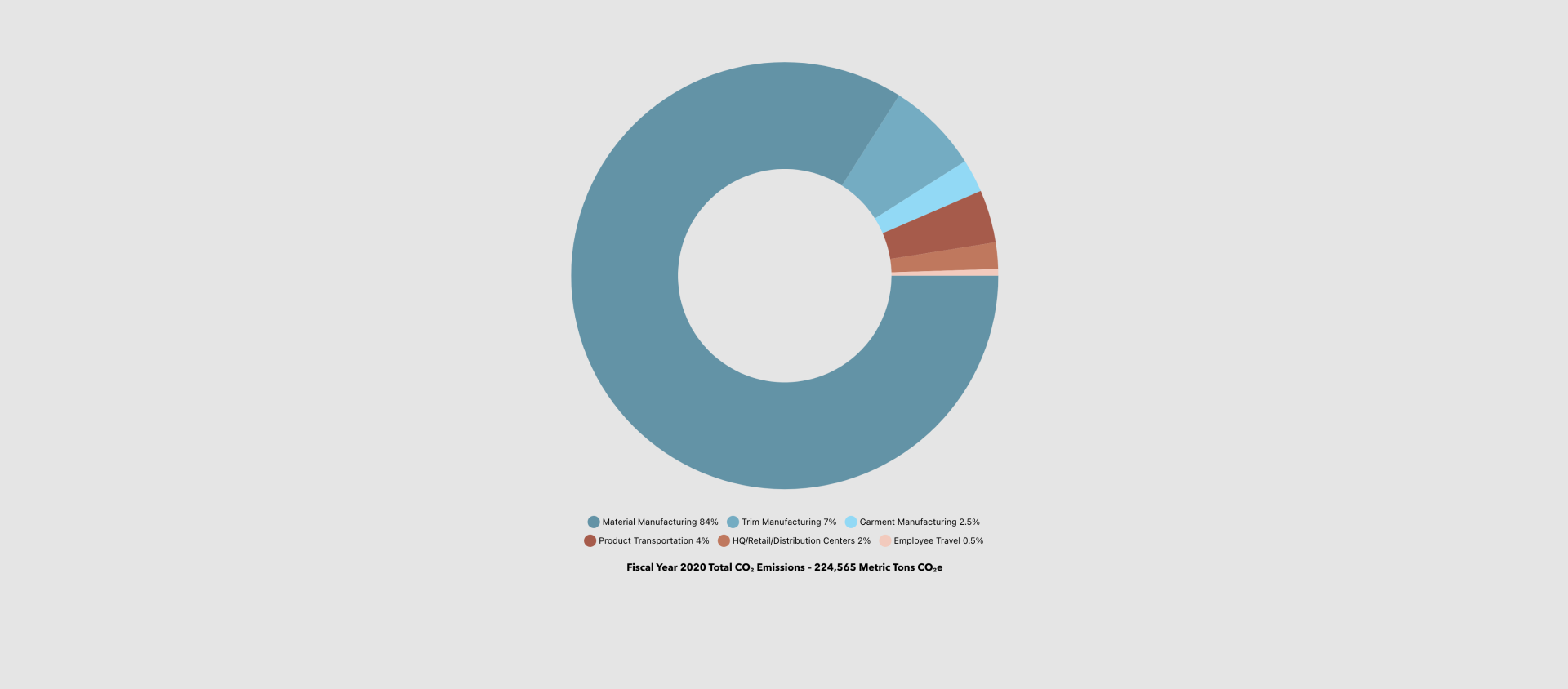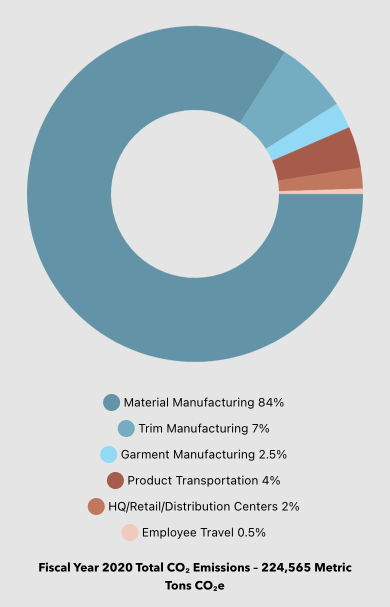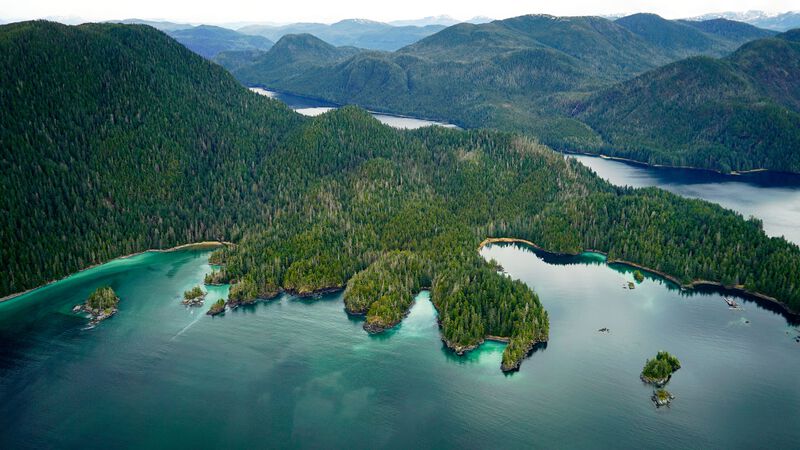Carbon Neutral Is Not Enough
Purchasing offsets to get to carbon neutral doesn’t erase the footprint we create and won’t save us in the long run. If our goal was to cut emissions from our owned and operated stores, offices and distribution centers, we’d be good. But the bulk of our emissions—95 percent—comes from our supply chain and materials manufacturing. We take responsibility for all of it.
How We Cut Our Carbon
Our Materials
No More Virgin Petroleum Fibers by 2025

NetPlus™ material is made from 100 percent recycled discarded fishing nets collected in fishing communities in South America.

We’ve used organic cotton exclusively since 1996 and we’re now testing Regenerative Organic practices with cotton farmers in India.

In 2016 we replaced neoprene rubber with natural rubber to reduce our use of petroleum-based materials in our wetsuits by 85 percent.
Our Metrics

Is Each Product Worth the Environmental Cost?
Our Supply Chain

Help Suppliers Cut Emissions
No More Virgin Petroleum Fibers by 2025

NetPlus™ material is made from 100 percent recycled discarded fishing nets collected in fishing communities in South America.

We’ve used organic cotton exclusively since 1996 and we’re now testing Regenerative Organic practices with cotton farmers in India.

In 2016 we replaced neoprene rubber with natural rubber to reduce our use of petroleum-based materials in our wetsuits by 85 percent.

Is Each Product Worth the Environmental Cost?

Help Suppliers Cut Emissions
Transforming Our Business Is Not Enough
Transforming how we do business is a crucial lever, but the climate crisis demands much more. We will support community-led efforts to go fossil-fuel-free and protect nature. We will also use any power and influence we have to meet climate change with systems change.
Nature-Based Solution

Protect Nature as a Climate Solution
Old-growth forests. Wetlands. Peat lands. Coastal marine habitats. Regenerative agriculture. Science confirms that nature can reduce a third of the CO2 we need captured by 2030 to slow catastrophic warming. For nearly 50 years, Patagonia has protected the wild places we love. Given the science and urgency, we now focus more than ever on the high-carbon landscapes that can save us, too. For example, through partnerships with local and Indigenous communities and our 1% for the Planet program, Patagonia has supported the protection of Alaska's Tongass National Forest since 2008, with its 17 million acres of old-growth spruce, hemlock, and cedar that hold hundreds of millions of tons of carbon.
Clean Energy

Invest in Community Power
Communities know what they need to make a just transition from fossil fuels to renewable energy. We support local knowledge and activation of climate solutions, particularly with Black, Indigenous and other communities of color that have been hit the hardest, lost the most and had the least say in their climate realities. Patagonia will expand our support of groups such as the ones we featured in our recent films DISTRICT 15 (on fighting Big Oil and Gas in California) and We the Power (on the energy-democracy movement in Europe). At the same time, we’re committed to a new energy system that gives communities real power.
Our Activism Toolkit

Strengthen the Movement
Patagonia has long supported grassroots groups on the front lines of the environmental crisis. In the last five years, we’ve given nearly $14 million to groups working to slow climate change. We’ll continue to make grants, while expanding our Patagonia Action Works platform that links individuals—like you—to community activism. We’re pushing industry to adopt higher standards, and we’re demanding progressive regulations and significant investment from government. During election years, we get out the vote and fight voter suppression to help elect leaders who will fight for healthy communities and a habitable planet.

Protect Nature as a Climate Solution
Old-growth forests. Wetlands. Peat lands. Coastal marine habitats. Regenerative agriculture. Science confirms that nature can reduce a third of the CO2 we need captured by 2030 to slow catastrophic warming. For nearly 50 years, Patagonia has protected the wild places we love. Given the science and urgency, we now focus more than ever on the high-carbon landscapes that can save us, too. For example, through partnerships with local and Indigenous communities and our 1% for the Planet program, Patagonia has supported the protection of Alaska's Tongass National Forest since 2008, with its 17 million acres of old-growth spruce, hemlock, and cedar that hold hundreds of millions of tons of carbon.

Invest in Community Power
Communities know what they need to make a just transition from fossil fuels to renewable energy. We support local knowledge and activation of climate solutions, particularly with Black, Indigenous and other communities of color that have been hit the hardest, lost the most and had the least say in their climate realities. Patagonia will expand our support of groups such as the ones we featured in our recent films DISTRICT 15 (on fighting Big Oil and Gas in California) and We the Power (on the energy-democracy movement in Europe). At the same time, we’re committed to a new energy system that gives communities real power.

Strengthen the Movement
Patagonia has long supported grassroots groups on the front lines of the environmental crisis. In the last five years, we’ve given nearly $14 million to groups working to slow climate change. We’ll continue to make grants, while expanding our Patagonia Action Works platform that links individuals—like you—to community activism. We’re pushing industry to adopt higher standards, and we’re demanding progressive regulations and significant investment from government. During election years, we get out the vote and fight voter suppression to help elect leaders who will fight for healthy communities and a habitable planet.




